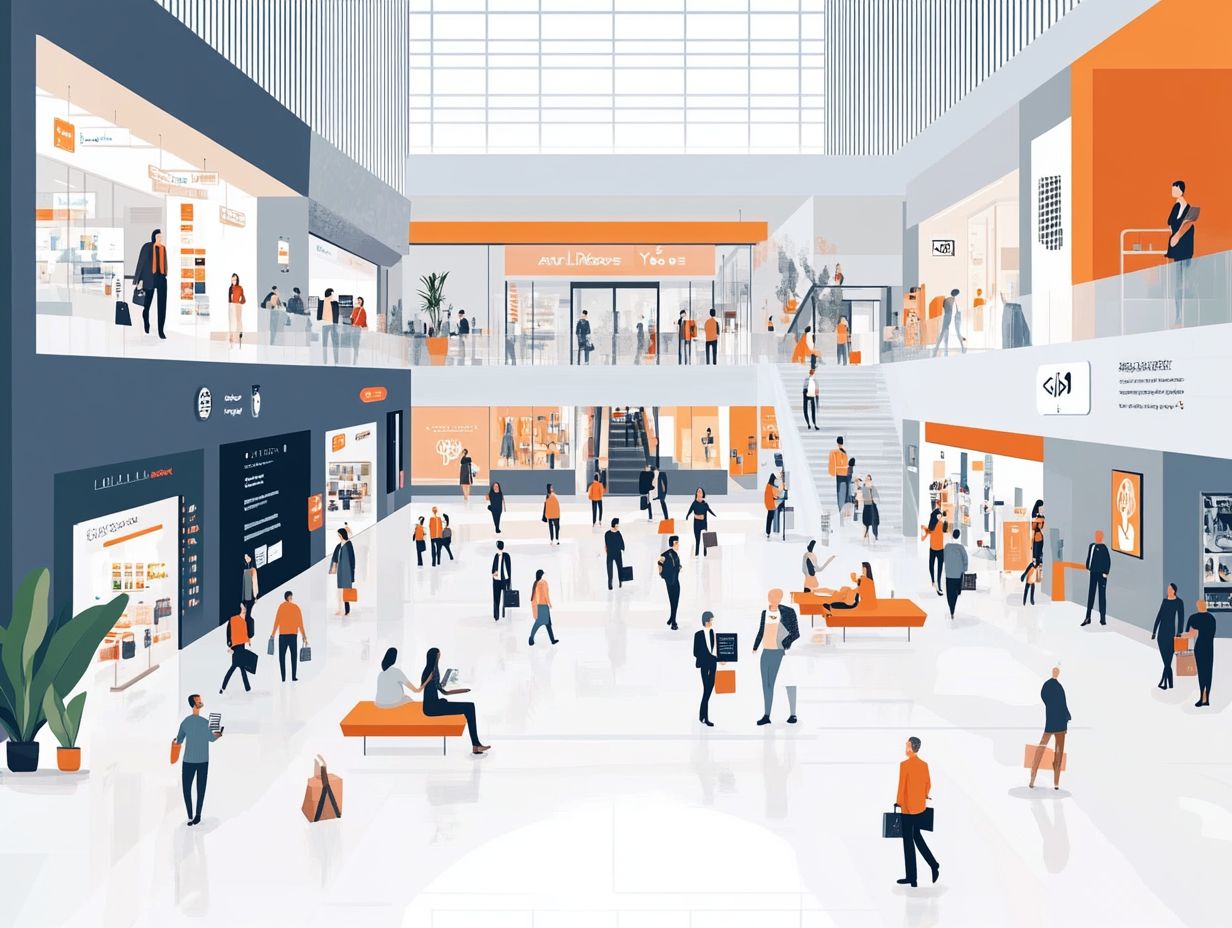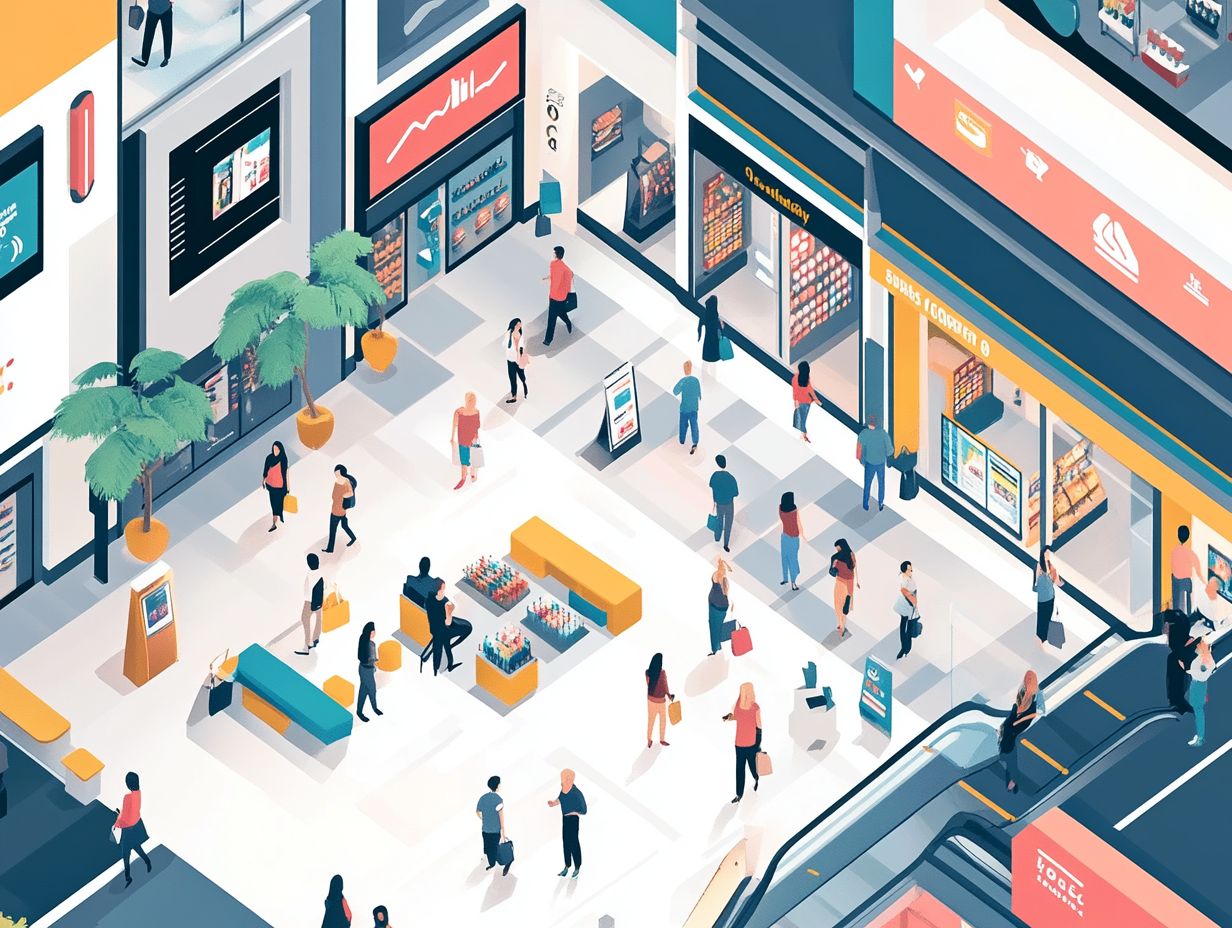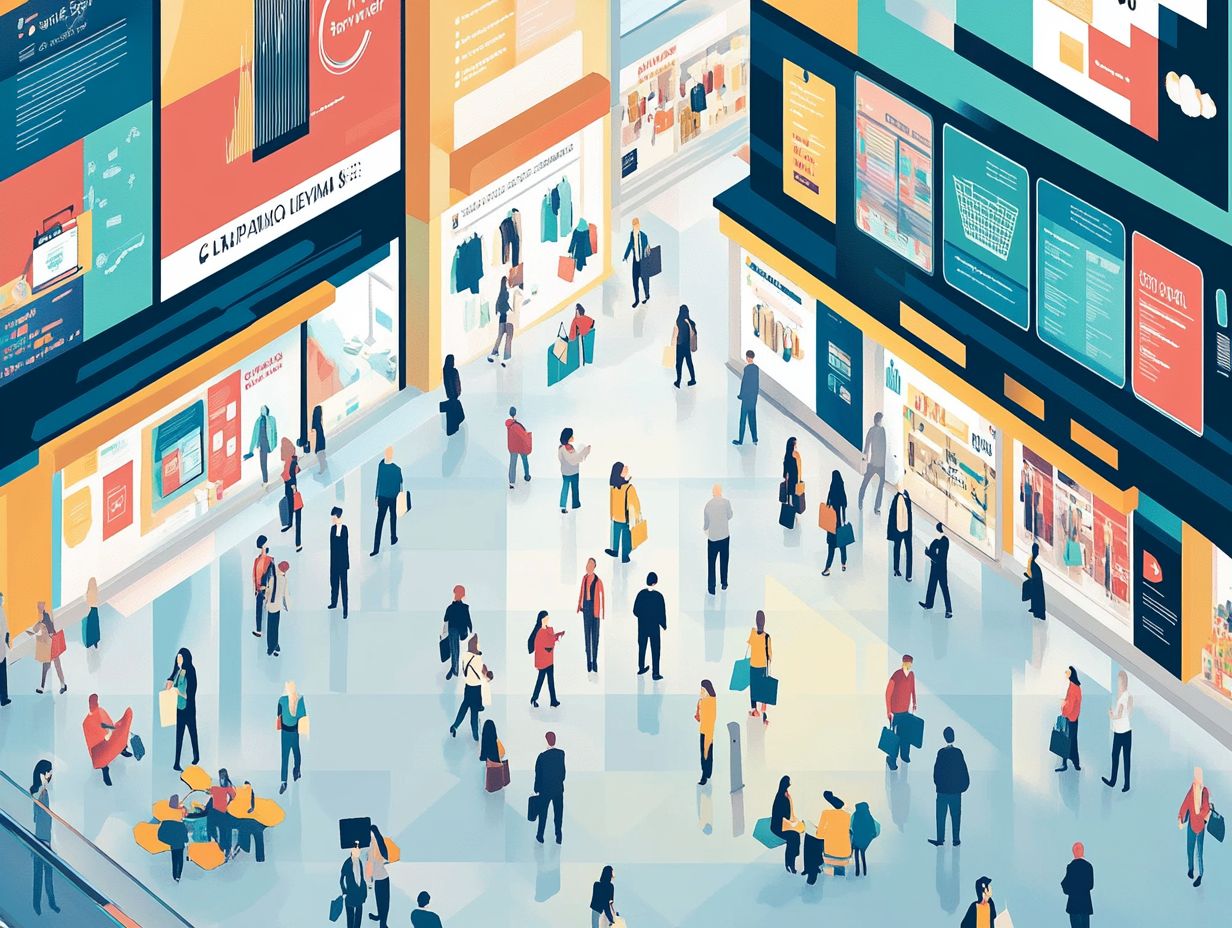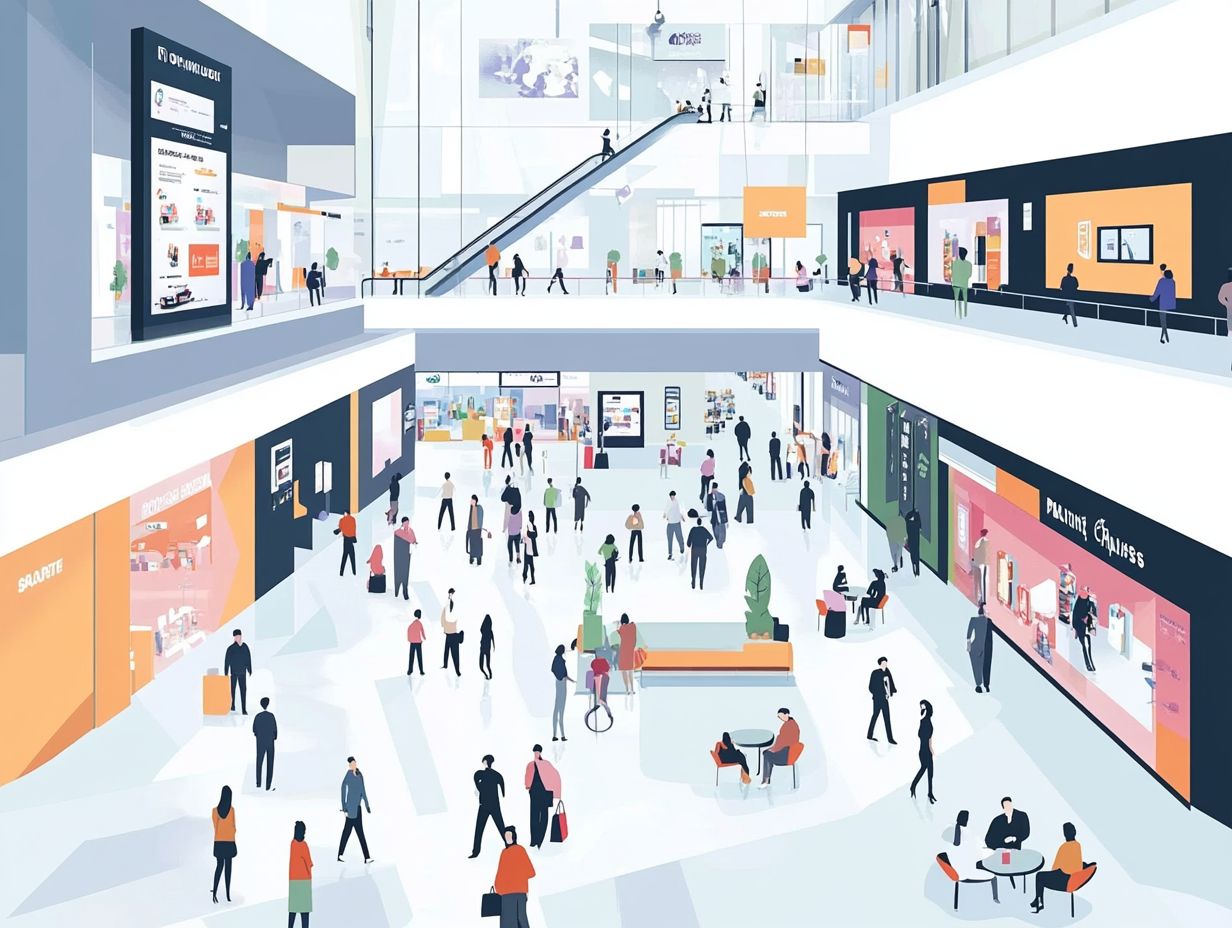Foot traffic data is essential for determining the success of shopping centers, as it offers valuable insights into shopper behavior and preferences. By understanding when and how consumers interact with different spaces, businesses can develop more effective marketing strategies and optimize store layouts. This text examines the importance of foot traffic data, the latest technologies for its collection, and critical privacy considerations. Additionally, it discusses strategies for leveraging this data to enhance shopper dwell time, thereby creating a vibrant and engaging shopping experience.
The Importance of Foot Traffic Data for Shopping Centers: Enhancing Retail Performance

Foot traffic data is essential for enhancing the shopping experience as it provides valuable insights into shopper behavior, traffic patterns, customer journey, and occupancy rates within shopping centers.
With access to this data, retail businesses can make informed, data-driven decisions that improve the shopping experience and increase sales. For example, foot traffic data can inform decisions on optimizing store layouts and in-store product placements, enhancing the tenant mix, assessing anchor store performance, and evaluating the effectiveness of marketing campaigns aimed at attracting traffic and converting visitors.
Understanding foot traffic trends allows shopping centers and malls to assess sales performance, enhance shopper retention, and identify opportunities to boost conversion rates, customer engagement, and dwell time. Seasonal variations and market segmentation further inform these strategies.
Additionally, a more comprehensive layer of analytics linked to foot traffic data includes retail analytics, which enables better customer segmentation, targeted promotions, and strategies that foster brand loyalty, increase shopper engagement, and profitability.
Understanding Shopper Behavior and Preferences
Understanding shopper behavior and preferences is essential for all retail entities, as these factors influence a shopping center’s ability to provide suitable services and products while creating an inviting shopping environment that meets customer needs. Insights from consumer behavior and visual merchandising further enhance the shopping experience.
By diving into the complexities of consumer psychology, retailers can identify and manage key factors such as emotional triggers, social influences, and individual shopping habits. Effective usage of data visualization and analytics tools can support these efforts.
Blockchain technology and other feedback mechanisms can offer valuable insights into customer experiences, enabling businesses to adjust their strategies, improve transaction data analysis, and enhance customer satisfaction.
These insights can inform marketing strategies and operational decisions, ensuring that shopping environments align with customer expectations. Ultimately, leveraging this knowledge can lead to increased customer loyalty and foot traffic, which in turn drives profitability.
Identifying Peak Shopping Times

Understanding peak shopping times is crucial for shopping centers to enhance their strategies regarding staff allocation, marketing events, and inventory optimization, ultimately improving the shopping experience for customers.
Shopping centers that analyze foot traffic data can gain valuable insights into when the highest influx of shoppers occurs. This information is essential not only for ensuring adequate staff coverage but also for planning more effective marketing campaigns that align with these footfall spikes.
Customized marketing campaigns aimed at peak hours can boost sales performance by increasing customer engagement and retention. By engaging consumers in this way, shopping centers can provide a more personal and memorable experience, thereby enhancing the likelihood of repeat visits and sales.
Methods for Collecting Foot Traffic Data
Accurate methods for collecting foot traffic data are essential for shopping centers to understand customer behavior, monitor traffic flow, and enhance the shopping experience.
Various techniques, such as mobile tracking, sensor technology, and location analytics, provide real-time data that can improve operational efficiency, influence traffic predictions, and inform key strategic decisions.
By utilizing these methodologies, retail businesses can gain insights into visitor engagement metrics, demographic insights, and shopping patterns, allowing them to refine marketing strategies and promotional activities that specifically target their desired audiences.
Technology and Tools Used for Data Collection

Advanced technology and data collection tools are transforming how shopping centers gather and analyze foot traffic data, offering retailers valuable insights into consumer behavior.
Mobile tracking utilizes GPS and Wi-Fi signals to monitor shopper movement within the space, enabling real-time analysis of traffic patterns. Heat maps visually represent customer flow and dwell times in shopping environments, helping retailers identify high-traffic areas and adjust their layouts accordingly.
Additionally, immersive in-store experiences that incorporate augmented reality and interactive displays not only enhance consumer engagement but also provide retailers with crucial information about preferences and buying patterns.
The use of these analytical tools and real estate analysis give the power to retailers to optimize shopper engagement through informed, data-driven decision-making and competitive positioning.
Privacy and Security Considerations
The increasing use of data collection methodologies by shopping centers to analyze foot traffic, retail traffic trends, and shopper behavior highlights the importance of privacy and security considerations in maintaining customer trust and complying with regulations.
Safeguarding data privacy and preventing misuse and abuse are essential for these systems, especially as consumers are more aware of their rights regarding personal information than ever before. Businesses must implement robust privacy and security measures to protect this data.
These measures include:
- Employing strong data encryption protocols
- Limiting access to sensitive information
- Regularly training employees on data protection practices
Additionally, adopting clear and transparent privacy policies that outline how foot traffic data, including customer segmentation and transaction data, will be used, stored, and shared can help build trust and encourage customers to engage with these services without fear of misuse.
Compliance with regulations such as GDPR and CCPA is not only a legal obligation but also a critical step toward protecting privacy and enhancing the overall customer experience.
Utilizing Foot Traffic Data to Increase Shopper Dwell Time

The effective use of foot traffic data enables shopping centers to implement strategies that enhance shopper dwell time, ultimately improving both the overall shopping experience and sales metrics.
Strategies for Improving Store Layout and Design
Enhancing store layout and design is a crucial strategy for increasing shopper dwell time, improving retail environment, and creating an engaging shopping environment that meets customer needs. Environmental design principles play a significant role in this strategy.
By strategically organizing merchandise and incorporating eye-catching elements, retailers can guide customers through a shopping experience that emphasizes product display, digital signage, and encourages interaction.
Shopper insights are essential in this process, as they provide valuable data regarding consumer behavior, preferences, shopping behaviors, and pain points.
A well-thought-out store design can promote an intuitive flow that reduces confusion and enhances comfort, making the shopping experience as seamless and enjoyable as possible.
Intentional zoning and themed displays can evoke emotional connections, transforming what is typically a transactional visit to a retail store into a unique experience that fosters brand loyalty.
Implementing Targeted Marketing and Promotions
Implementing targeted marketing and promotions based on foot traffic data and customer insights allows shopping centers to engage their audience more effectively, enhance customer satisfaction, and drive revenue growth.
Insights into shopper demographics and segmentation enable shopping centers to tailor their marketing strategies to align with the specific preferences and behaviors of different customer segments.
For instance, understanding the age, gender, and spending patterns of shoppers helps shopping centers design personalized marketing and promotional campaigns that resonate with each segment.
This level of targeting not only increases the relevance of marketing efforts, such as experiential marketing and loyalty programs, but also significantly boosts the chances of converting casual visitors into loyal patrons.
As a result, these successful targeted marketing and promotional initiatives have been shown to increase foot traffic and improve sales conversion rates for both businesses and customers.





